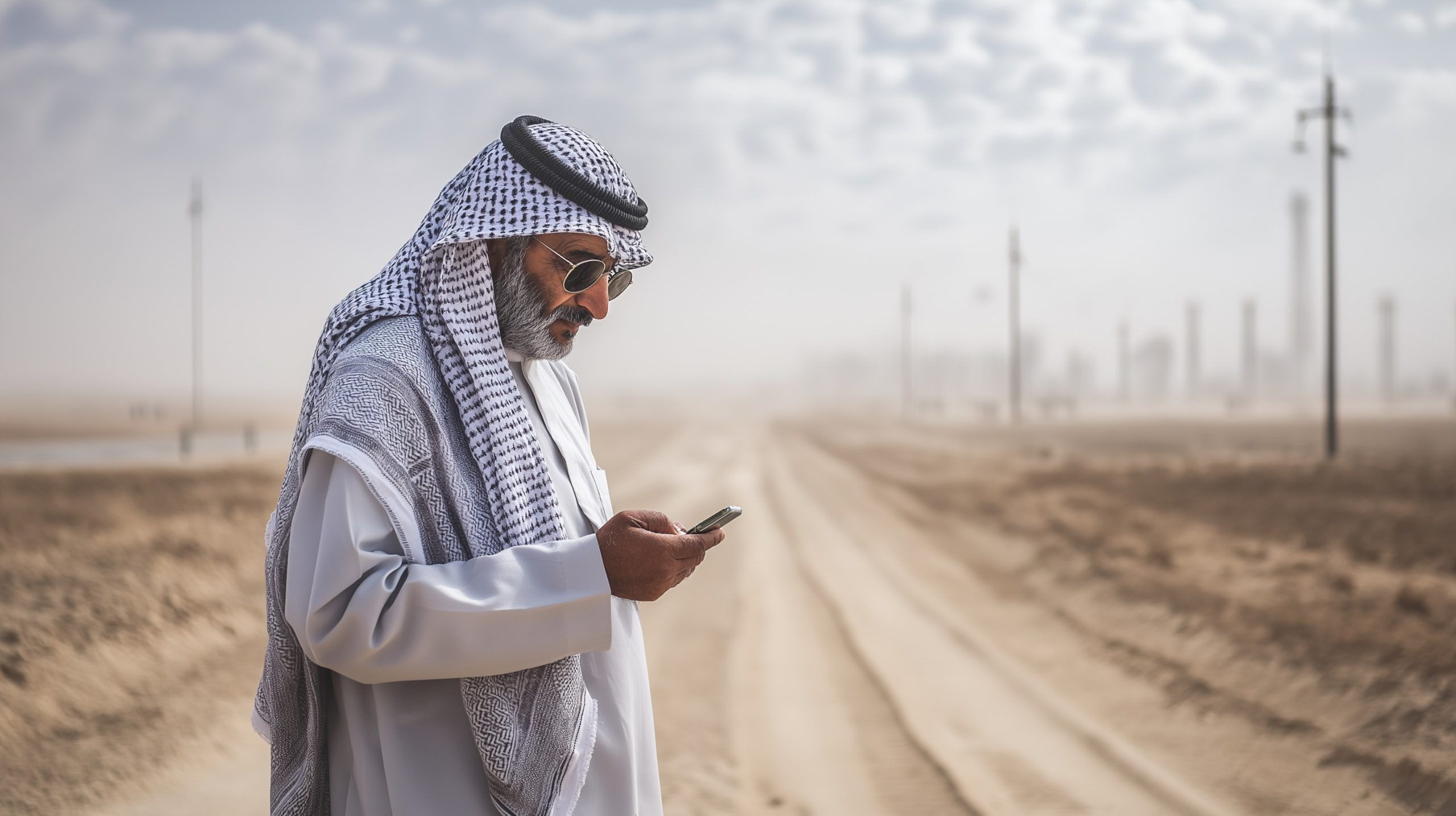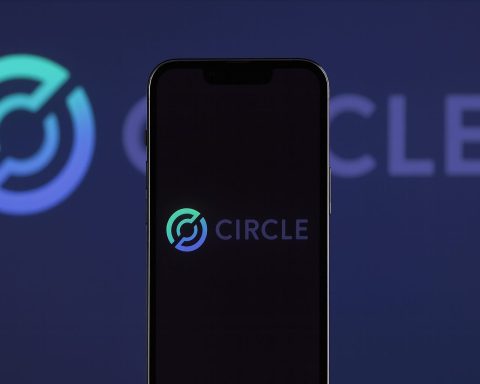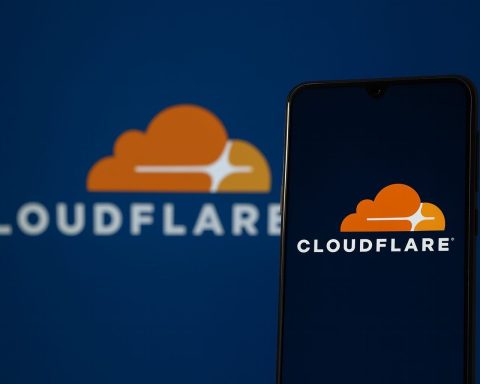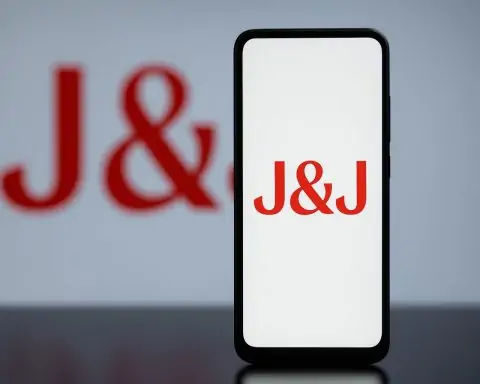- Kuwait had approximately 4.29 million internet users, about 99% of the population, as of early 2024 per DataReportal.
- The country had around 7.89 million cellular mobile connections in 2024, equating to 182% of the population due to multiple SIM usage.
- Zain Kuwait launched 5G in 2019, becoming the first to roll out 5G among the three major operators, with 5G coverage reaching about 97% of the population by 2020.
- In July 2024, the Ministry of Communications announced the shutdown of copper services in several districts of Kuwait City and suburbs, encouraging customers to switch to fiber via ONTs.
- By 2022, about 98% of Kuwaiti households technically had access to fixed broadband, with plans to achieve full 2025 coverage under the fiber initiative.
- As of January 2025, the median fixed broadband download speed was about 194 Mbps, placing Kuwait in the global top 20, while mobile median speed reached about 309 Mbps in February 2025.
- The mobile operators Zain (~3.5 million subscribers), Ooredoo (~2.5 million), and STC (~2.0 million) collectively dominate the market, with STC owning Kuwait’s largest 5G network after acquiring Qualitynet in 2019.
- CITRA licensed Kuwait’s first MVNO, Virgin Mobile, in 2022, operating on STC’s network.
- In 2024, CITRA launched a regional fiber corridor linking Kuwait to Frankfurt via Iraq to diversify international routes and reduce latency.
- Kuwait hosts a Google Cloud region following a 2023 land lease agreement to establish local Google Cloud data centers in Kuwait, signaling a move toward regional cloud hub status.
Overview of Internet Access in Kuwait
Kuwait boasts near-universal internet access, with approximately 4.29 million internet users (99% of the population) as of early 2024 [1]. The country’s entire population lives in urban areas, and virtually all households have internet at home [2]. Mobile connectivity is especially prevalent – Kuwait had about 7.89 million cellular mobile connections in 2024 (182% of the population, indicating many people maintain multiple SIMs) [3]. This extensive connectivity is enabled by a highly developed telecom sector and a tech-savvy, urbanized society. High smartphone penetration and dual-SIM usage are common, giving consumers the flexibility to switch between providers for optimal packages [4]. Overall, Kuwait’s current state of internet access is characterized by widespread usage, heavy reliance on mobile broadband, and a rapidly improving fixed network infrastructure.
Historically, Kuwait’s fixed broadband development lagged behind mobile. The national Ministry of Communications (MoC) long operated a copper-based telephone network, and fiber-optic rollout was slow through the 2010s [5]. As a result, many residents turned to mobile networks for home internet access. Even in 2020, about 84.8% of households used wireless 4G/5G routers provided by mobile network operators for home internet [6]. This mobile-first trend is now shifting as major investments upgrade the fixed infrastructure. In recent years, Kuwait has accelerated fiber-optic deployment and 5G expansion, aiming to provide high-speed connectivity through both wired and wireless technologies. The Communications and Information Technology Regulatory Authority (CITRA), established in 2014, plays a key role in driving these developments and ensuring that internet access is available to virtually everyone in Kuwait.
Major ISPs and Telecom Operators
Kuwait’s telecom market is served by a handful of major operators, which provide both mobile and fixed internet services. After the end of a duopoly in the 2000s, the sector became highly competitive, with companies vying through innovation and promotions [7]. The three dominant telecom operators – Zain, Ooredoo, and STC – each offer mobile networks and, through subsidiaries or partnerships, fixed broadband services. In addition, a few independent ISPs focus on niche or enterprise services. The table below summarizes the major providers and their roles:
| Provider | Market Position & Subscribers | Services and Notes |
|---|---|---|
| Zain Kuwait | Largest mobile operator with ~3.5 million subscribers [8]. | Mobile voice/data (2G–5G) nationwide; launched 5G in 2019 [9]. Offers fixed-wireless (5G home broadband “BEAM”) and some fiber-to-the-home in partnership with MoC. Won “Fastest Mobile Network” and “Fastest Fixed Internet” awards in 2024 [10], reflecting its high speeds. |
| Ooredoo Kuwait | Second-largest operator (~2.5 million subscribers) [11]. | Mobile networks (2G–5G) and fixed broadband via its ISP arm. Ooredoo acquired FASTtelco (a leading ISP) in 2016 [12], enabling it to offer fiber-optic internet and enterprise services. First in Kuwait to obtain a cloud services license from CITRA [13]. Prepared to launch 400 Mbps fiber service in 2023 [14] and provides Fiber-to-the-Home in many areas. |
| STC Kuwait (formerly VIVA) | Third mobile operator (~2.0 million users) [15]. | Mobile services (2G–5G) with the country’s largest 5G network (STC launched standalone 5G in 2021) [16]. Expanded into fixed broadband by acquiring Qualitynet (Kuwait’s top ISP) in 2019 [17]. Through this acquisition, STC offers fiber broadband and corporate internet services (rebranded as “Solutions by STC”). Hosts Kuwait’s first MVNO: Virgin Mobile, launched 2022 on STC’s network [18] [19]. |
| KEMS / Zajil Telecom | Oldest ISP in Kuwait (est. 1991), now part of Kalaam Group (Bahrain) [20]. | Provides internet and data services primarily for enterprises and government. Historically known for dial-up and early DSL; today focuses on enterprise connectivity, MPLS, cloud and managed services. KEMS and Zajil merged and were acquired by Kalaam in 2021 [21], continuing as a key business ISP. |
| B.Online (Gulfnet) | Another long-running ISP (often branded Gulfnet). | Offers fixed internet packages, GPON fiber in some areas, and niche services. It was one of the four main ISPs utilizing MoC infrastructure and remains an option for home and business broadband. Now smaller in market share compared to the telco-owned ISPs. |
Note: The Ministry of Communications still owns the core fixed network infrastructure, but these licensed ISPs pay to use it [22]. Over the past decade, the major mobile operators subsumed most independent ISPs (e.g. Ooredoo->FASTtelco, STC->Qualitynet) to provide bundled services. Competition is robust – Zain, Ooredoo, and STC collectively account for the vast majority of subscriptions, with Zain alone holding an estimated ~44% mobile market share [23]. The entrance of Virgin Mobile as an MVNO (riding on STC’s network) introduced additional choice in the mobile segment [24]. Overall, Kuwait’s internet service landscape is dominated by these few players, all of whom offer advanced 4G/5G mobile access and are increasingly delivering fiber or 5G-based home broadband.
Infrastructure Development and Technology
Fixed Broadband Infrastructure (Fiber-Optics and DSL)
Kuwait is in the midst of a major transition from legacy copper lines to modern fiber-optic broadband. The Ministry of Communications has been phasing out copper telephone/DSL networks in favor of fiber. In July 2024, the MoC announced the shutdown of copper services in several districts of Kuwait City and suburbs – including Salmiya, Rumaithiya, Salwa, and others – and urged residents to switch to fiber-optic connections by installing Optical Network Terminals (ONTs) [25] [26]. This came after years of gradual fiber rollout: beginning around 2016, fiber was laid in dozens of areas, albeit with delays that stretched the timeline into the early 2020s. By 2019, only about 20% of urban areas had fiber coverage [27], but the pace has since accelerated. A public-private partnership project aims to extend fiber to over 90% of households nationally under a long-term (50-year) concession [28]. Indeed, by 2022 about 98% of Kuwaiti households technically had access to a fixed broadband network (including fiber or high-speed wireless access), and full coverage is anticipated by 2025 [29]. The government’s initiative “New Kuwait 2035” prioritizes such infrastructure upgrades to meet future digital demands.
Currently, fiber-optic broadband is available in most populated areas, often delivered by FASTtelco (Ooredoo) or Qualitynet (STC) over MoC’s network. Providers have begun offering gigabit-class speeds – for example, Ooredoo launched up to 400 Mbps home fiber service in 2023 [30], and Zain has demonstrated fiber-to-the-home with speeds up to 1 Gbps [31]. The fiber rollout is closely coordinated with CITRA and the MoC, ensuring that new connections meet modern standards. As fiber extends nationwide, the MoC is retiring the old copper DSL lines (with free ONT installations offered during the transition [32]). This will vastly improve reliability and bandwidth for fixed internet. In parallel, some areas not yet reached by fiber rely on Fixed Wireless Access (FWA) for home broadband – using 4G/5G routers as a substitute. This approach has been a successful stopgap, but the long-term goal is a ubiquitous fiber network supplemented by wireless tech. Overall, Kuwait’s fixed infrastructure is rapidly evolving: moving from an era of limited DSL options toward one of widespread fiber connectivity that can support high speeds and future-proof services.
Mobile Networks and 5G Deployment
Mobile broadband is the cornerstone of Kuwait’s internet access, and the country has been at the forefront of adopting advanced mobile technology. All three operators – Zain, Ooredoo, and STC – launched commercial 5G services in mid-2019, making Kuwait one of the first countries globally to roll out 5G on a wide scale [33]. By 2020, 5G coverage reached about 97% of the population [34], a figure that has likely grown even further since. Prior to that, 4G LTE networks were fully deployed nationwide (100% population coverage) [35], providing a strong foundation for mobile internet. The rapid 5G rollout was partly driven by the lack of widespread fiber at the time – 5G fixed-wireless broadband became a viable alternative for home internet, and operators eagerly filled that niche.
Kuwait’s mobile operators have continuously upgraded their networks:
- Zain Kuwait was the first to launch 5G and has invested heavily in network capacity. In 2021–2024 it received multiple Ookla Speedtest awards, including Fastest Mobile Network in Kuwait [36]. Zain has also implemented Voice over 5G (Vo5G) for HD voice calls on 5G [37] and is preparing for 5G-Advanced (5.5G) features [38].
- STC Kuwait deployed a large 5G network and was the first to activate standalone 5G (SA core) in 2021 [39], eliminating dependency on 4G infrastructure. STC claims one of the widest 5G coverages and has partnered with global firms (e.g. Huawei, Virgin) to enhance its offerings.
- Ooredoo Kuwait similarly offers extensive 5G coverage and leverages its regional expertise. It has used its 5G network to deliver home broadband and even introduced a Fibre+ (Fiber-to-the-Room) solution that works with both fiber and 5G to improve indoor coverage [40]. Ooredoo’s focus on network quality led it to test advanced 5G carrier aggregation technologies, aiming at multi-gigabit mobile speeds [41].
Overall, Kuwait’s mobile infrastructure is state-of-the-art. The country has consistently ranked among the top nations in mobile network speed and quality, thanks to substantial investments by operators and support from CITRA. Spectrum: CITRA allocated new frequency bands to operators to bolster 5G; for instance, additional spectrum was released in preparation for 5G-A (Advanced) services [42]. The regulator also ensures that cell tower deployments (even small cells and 5G mmWave sites) meet safety and coverage requirements [43] [44]. As of 2025, Kuwait’s mobile users enjoy broadly available 5G with speeds routinely in the hundreds of Mbps, and the networks are gearing up for the next evolution (such as 5G Advanced and eventually 6G).
International Connectivity and Backbone
Kuwait connects to the global internet primarily via submarine fiber-optic cables and regional terrestrial links. Given the nation’s heavy internet use, robust international bandwidth is critical. Traditionally, Kuwait has been served by multiple submarine cables landing on its coast (e.g. the Fiber-Optic Gulf (FOG) cable, the FLAG/GCX cable, and others connecting to the UAE, Saudi Arabia, and beyond). To enhance resilience, CITRA and the MoC have taken steps to diversify connectivity routes. In 2024, CITRA launched a new regional fiber corridor linking Kuwait to Frankfurt (Europe) via Iraq [45]. This terrestrial cable route provides a low-latency path that can act as a backup to undersea cables, reducing the risk of outages from submarine cable cuts in the Gulf. The new corridor is meant to ensure secure and efficient data transit to Europe and has been offered to major international providers as an alternative route [46].
Kuwait is also investing in new submarine cable projects. In 2023, CITRA awarded Ooredoo a license to build the “Fibre in Gulf (FIG)” submarine cable [47], which will further increase international capacity and route options. These infrastructure projects, combined with upgrades to core routers and IXPs (Internet Exchange Points), mean Kuwait’s internet traffic has multiple redundant paths in and out of the country. Locally, the fiber backbone within Kuwait is being strengthened to handle growing traffic between ISPs, telecom operators, data centers, and government networks. By hosting Google and other cloud data centers (see next section), Kuwait is positioning itself as a minor regional hub, which also necessitates strong backbone connectivity. In summary, infrastructure development in Kuwait spans from local fiber loops to 5G radio networks to international fiber cables – all aspects are being modernized to support the country’s digital ambitions.
Internet Penetration and Usage Patterns
Kuwait enjoys one of the highest internet penetration rates in the world. As of January 2024, 99.0% of the Kuwaiti population uses the internet [48]. This effectively means the internet is accessible to nearly every adult and child in the country (aside from infants). Such penetration puts Kuwait on par with top-connected societies – for comparison, neighboring UAE and Qatar also report ~99-100% internet usage, and the global average is around 65-70%. In absolute terms, Kuwait’s 4.29 million internet users closely matches its 4.33 million population, reflecting the ubiquity of digital access [49] [50].
Demographic usage: Internet use cuts across all demographics in Kuwait. The country is 100% urbanized [51], which simplifies broadband rollout and ensures that even non-citizen residents (expatriate workers who form a majority of the population) have access via mobile or fixed services. There is a slight gender imbalance (60% male, 40% female population) [52], but both genders have high usage rates given the affordability of mobile internet. Young Kuwaitis are highly connected: smartphone ownership is pervasive among youth and working-age adults, and social media adoption stands at about 95.9% of the population (4.15 million social media users in 2024) [53]. This indicates that almost everyone who is online is also active on platforms like Instagram, Snapchat, Twitter, etc. Popular uses of the internet include instant messaging, video streaming, online shopping, and e-government services – all growing thanks to fast networks.
One notable usage pattern is the reliance on multiple connections. It’s common for individuals to have a mobile data plan on their phone plus a separate home internet subscription. As mentioned, many households use 5G or LTE routers as their home Wi-Fi source. This was born out of necessity when fiber was limited, but continues due to convenience and competitive data offers. CITRA’s 2020 survey found 84.8% of households used mobile network routers at home [54], showing how FWA became a mainstream solution. Now, as fiber reaches more homes, some are switching to wired connections for unlimited high-throughput service, though others retain wireless plans if they find them sufficient.
Another aspect is the high mobile penetration. With 182% mobile subscription penetration [55], many people maintain two SIMs – often to take advantage of promotions or to separate work and personal lines. Dual-SIM smartphones allow Kuwaitis to easily use, say, Zain and Ooredoo simultaneously and pick the best signal or deal at any time [56]. This has driven operators to compete on data caps and quality to retain loyal users.
Internet consumption trends: Kuwait’s users are data-hungry. Video streaming (YouTube, Netflix, Shahid, etc.), social media, and gaming are extremely popular, which is feasible given average connection speeds (discussed in the next section). E-commerce and online banking are also widely used; by 2023, online payment transactions in Kuwait were growing nine times faster than in-store transactions, reflecting a digital shift in commerce [57]. Additionally, government services are increasingly online – residents use the Kuwait Mobile ID app and various e-government portals for civil services, enabled by the broad internet access [58].
In summary, internet usage in Kuwait is essentially universal and multifaceted: nearly every household is connected, typically through a mix of high-speed mobile and (increasingly) fiber broadband. Kuwaitis are highly active online, whether for entertainment, communication, or business, making the internet a deeply ingrained part of daily life.
Pricing, Speed, and Quality of Service
Speeds: Kuwait’s internet speeds are among the fastest globally, a testament to the advanced 5G networks and ongoing fiber deployment. In early 2025, Kuwait ranked 3rd in the world for mobile internet speed, with a median download speed around 309 Mbps on cellular networks [59]. Only the UAE and Qatar measured higher, at ~544 Mbps and 522 Mbps respectively, while Kuwait’s mobile speeds even exceeded those in South Korea, the U.S., and European countries [60]. Earlier in late 2024, the Speedtest Global Index clocked Kuwait’s average mobile download at ~258.5 Mbps, behind UAE (428.5 Mbps) and Qatar (356.7 Mbps) but ahead of all other countries [61]. Such speeds mean that Kuwaiti users can stream 4K videos, engage in video calls, and download large files on the go with ease. On the fixed broadband side, speeds have also risen dramatically. The median fixed broadband download speed in Kuwait was about 194 Mbps as of January 2025 [62]. This is a huge improvement (fixed medians were ~148 Mbps a year prior [63]) and places Kuwait in the global top 20 for fixed internet performance. Notably, Kuwait’s fixed speeds have now caught up with those of tech-leading nations – for instance, 194 Mbps is on par with South Korea’s median and slightly higher than Qatar’s ~190 Mbps at that time [64].
Gigabit-level service is becoming available: some fiber subscribers can get packages of 500 Mbps or 1 Gbps (especially in areas where Zain or Ooredoo have rolled out FTTH). In 2022, FASTtelco launched 200 Mbps residential fiber plans [65], and by 2023 Ooredoo introduced 400 Mbps service as noted. For mobile users, 5G can realistically deliver 100–300 Mbps in real-world use, and peak speeds above 1 Gbps have been demonstrated under ideal conditions. The high speeds are supported by strong infrastructure and ample international bandwidth – however, real speeds can vary by location. For example, users in areas still on 4G or older DSL might see lower performance, but these gaps are closing as upgrades continue.
Quality of Service (QoS): The competitive market in Kuwait has led to generally good quality of service. According to Ookla’s analysis for Q3–Q4 2024, Zain Kuwait provided the fastest mobile and fixed broadband in the country, leading in Speed Score and in metrics like 5G video streaming and gaming experience [66]. Ooredoo and STC also maintain high-quality networks; an OpenSignal report noted that all operators achieved a “Very Good” rating (65–78 out of 100) in video experience on 5G, indicating smooth streaming with minimal buffering [67]. Call quality and coverage are reliably strong in urban Kuwait – call drops are rare and indoor coverage has improved with more cell sites and technologies like VoWiFi (Voice over WiFi) introduced by Ooredoo [68]. ISPs are overseen by CITRA to meet certain service standards, and the regulator has empowered consumers with tools to report issues.
One area of QoS focus is latency and international routing. Kuwait’s geographic location means latency to European servers ~50–100 ms, and to North America ~150+ ms. The new terrestrial fiber route via Iraq (launched by CITRA) helps reduce latency to Europe and provides redundancy [69]. This improves reliability for critical services. Meanwhile, local content delivery has grown – over half of the top 1000 websites accessed in Kuwait have caching servers inside the country (53% local cache rate) [70], speeding up content delivery.
Pricing: Internet service in Kuwait is moderately priced by regional standards. Fixed broadband plans in 2024 cost about $73 per month on average (approx 22 Kuwaiti Dinars) [71]. This is cheaper than in the UAE (avg $143) and roughly on par with Qatar and Saudi Arabia (both around $92) [72] [73]. In fact, the cost per megabit in Kuwait is quite low – around $0.46 per Mbps – because users get high speeds for the price [74]. For example, a typical home fiber package might be 100 Mbps for KD 15–20 ($50–65) monthly, while a top-tier 500 Mbps or unlimited plan could be KD 30–45 ($100–150). Mobile data pricing varies by operator, but competition has driven generous data bundles. A common offering is unlimited 5G data for around KD 45 (~$150) per month [75], or large data caps (e.g. 500 GB for KD 5–10 on promotion) [76]. Prepaid mobile users can get smaller data packs (e.g. 10 GB for a few dinars). Overall, prices have been trending downward or offering more data for the same cost, thanks to CITRA’s regulatory oversight and market saturation.
When comparing affordability, Kuwait’s average broadband cost equates to about 1.2% of monthly GDP per capita, which is reasonable given Kuwait’s high income levels. That said, some low-wage expatriate workers may still find even KD 10 per month burdensome, but they often rely on mobile prepaid plans or shared connections. The government occasionally discusses ensuring affordable internet as part of digital inclusion, though specific subsidies are not in place (the market competition itself has made entry-level plans accessible).
In summary, Kuwait’s internet is fast and reasonably affordable. The country’s users benefit from world-class mobile speeds and steadily improving home broadband quality. While prices are not the cheapest globally, the value (speed per price) is excellent. Kuwaiti consumers can choose from multiple providers and packages, and the intense competition tends to keep service quality high – as evidenced by international accolades and the satisfying user experiences in streaming, gaming, and other high-bandwidth activities [77] [78].
Government Policies, Regulation, and Digital Initiatives
The Kuwaiti government, primarily through CITRA (Communication and IT Regulatory Authority) and the Ministry of Communications, has implemented several policies to foster a modern internet ecosystem. Key aspects of regulation and digital transformation initiatives include:
- Liberalization and Licensing: The telecom sector was liberalized in the 2000s, introducing competitors to the state-owned operators. CITRA, formed by law in 2014, took over as an independent regulator to oversee telecommunications and IT. It issues licenses to ISPs and telecom companies, manages spectrum, and enforces service standards. CITRA’s licensing regime covers mobile operators, ISPs, and even newer services like MVNOs and cloud service providers [79]. For instance, CITRA set the annual license fee for a full ISP at 98,000 KWD [80], and it authorized Kuwait’s first MVNO (Virgin Mobile) in 2022 under STC’s network [81]. By streamlining licenses and reducing bureaucracy, the government encourages new players and services in the market.
- Infrastructure Investment and Public-Private Partnerships: The government actively invests in digital infrastructure as part of its national development plans. The New Kuwait Vision 2035 explicitly targets transforming Kuwait into a regional financial and digital hub [82]. To that end, MoC and CITRA launched a national broadband initiative – partnering with private telecom firms to finance and build the fiber-optic network reaching 90+% of households [83]. The state provides rights-of-way, regulatory support, and sometimes funding guarantees, while operators carry out construction and service provisioning. Such PPP models aim to expedite fiber rollout after noting that purely public efforts were slow. CITRA’s Acting Chairman in 2024 highlighted these successes, noting “exceptional successes in developing digital infrastructure” and pledging continued focus on public-private partnerships to boost the ICT sector [84] [85]. Another initiative was CITRA’s contract with STC to build a new headquarters and tech campus in Kuwait City, symbolizing trust in private sector contribution to ICT growth [86].
- Digital Government and Services: Kuwait is pushing forward with e-government and digital transformation of public services. A flagship project is the Kuwait Mobile ID, a smartphone app (developed by the Public Authority for Civil Information in collaboration with Zain and others) that provides a secure digital identity to residents [87]. Using this app, people can authenticate online, sign documents, and access government services electronically, reducing the need for in-person visits. The Ministry of Interior also undertook a massive biometric identification program, enrolling millions of citizens and residents for fingerprint and iris data to secure access to services and borders [88]. By late 2024, over 3 million individuals were registered, enhancing both security and convenience in e-government [89]. These initiatives align with Vision 2035’s goal of a fully digital government and informed policy-making through data.
- Cloud and Data Localization: CITRA has embraced a “Cloud First” policy for government IT, encouraging agencies to migrate to cloud services for efficiency [90]. In 2022, CITRA partnered with Microsoft to set up a Government Cloud and adopt a Zero-Trust cybersecurity model for state systems [91]. Furthermore, CITRA signed a land lease with Google in 2023 to establish local data centers for Google Cloud in Kuwait [92]. This will provide advanced cloud infrastructure on Kuwaiti soil, benefitting both public and private sectors and ensuring data sovereignty. By attracting global tech companies (like Google) and forging partnerships with them, Kuwait aims to become a regional cloud and data hub [93] [94]. The presence of local cloud regions should also improve service latency and support local startups in tech.
- Regulatory Reforms and Consumer Protection: CITRA continuously updates its regulations to keep pace with technology. In 2023–24, CITRA introduced a new organizational structure and launched services like “Kashif,” a caller ID name display system that helps consumers identify spam or unknown callers [95]. The regulator also mandates SIM card registration to curb fraud and has a portal for reporting harmful content or service complaints. There is a content regulation aspect: Kuwait, like other Gulf states, filters or blocks certain online content that violates cultural or moral norms (e.g. pornography, some extremist material). CITRA’s website even provides a service for requesting to block/unblock specific websites [96]. Additionally, laws such as the Cybercrime Law and Press and Publications Law have been used to prosecute defamation or offenses online [97]. While Kuwait generally fares better than some neighbors in internet freedom, the government can and does restrict or penalize some online speech, especially content critical of the Emir or that is deemed blasphemous [98]. Such measures are justified by authorities as maintaining social order, though free speech advocates watch them closely.
- Cybersecurity and Capacity Building: Recognizing rising cyber threats, Kuwait established a National Cybersecurity Center (NCSC) in 2022 and, as noted, brought in global partners to strengthen defenses [99]. Kuwait was reported as the third most targeted GCC country by ransomware in recent years [100] [101], prompting these efforts. Kuwait also collaborates with entities like Thales (for secure national ID cards) [102] and local banks to integrate biometric verification in finance [103]. On the human capital side, telecom companies (e.g. Zain, STC) and institutions (KFAS, universities) are running digital skills training programs for youth in AI, coding, and data science [104]. This ensures the population can leverage the advanced internet infrastructure effectively and supports the broader digital economy.
In summary, government policy in Kuwait strongly supports the expansion and smart use of the internet. The regulatory environment balances competition with oversight – CITRA keeps prices and QoS in check while enabling new technologies (5G, cloud, etc.). Kuwait’s Vision 2035 acts as a blueprint, under which the country is investing in infrastructure, digitizing government services, improving cybersecurity, and encouraging innovation. If challenges like cyber threats and any residual digital divide are managed, these initiatives will significantly transform Kuwait into a digitally empowered society and economy.
Satellite Internet Availability and Providers
Until recently, satellite internet has played a minimal role in Kuwait’s broadband landscape, largely because the country’s terrestrial networks are so well developed. However, interest in satellite options (especially low-Earth orbit constellations) is growing as a way to complement Kuwait’s connectivity. Here’s an overview of satellite internet in the Kuwaiti context:
- Current Satellite Internet Options: For most consumers, direct satellite internet is not a common choice in Kuwait. Historically, a few specialized providers offered VSAT (very small aperture terminal) services for businesses or remote use. For example, companies like Talia provide Ka-band coverage in the region (via Arabsat satellites) that can cover Kuwait for enterprises needing a backup link [105]. Additionally, the UAE’s Yahsat offers “YahClick” broadband across the Middle East, which technically can serve Kuwait with satellite broadband on Hughes spacecraft [106]. These services tend to be expensive and have higher latency (~600ms for geostationary satellites), so they’re generally used by oil & gas installations, ships, or as contingency links rather than by home users.
- Starlink (SpaceX): The big development is the anticipated arrival of Starlink in Kuwait. Starlink’s LEO satellite constellation promises high-speed, low-latency internet globally. According to Starlink’s coverage map, Kuwait is included in its planned service area, but as of mid-2025 Starlink is not yet officially available or licensed in Kuwait [107]. The company requires regulatory approval to operate, which CITRA has not granted thus far. Nonetheless, preparations are underway: In 2023, Kuwait’s conglomerate Alghanim Industries signed an agreement with SpaceX to become an official Starlink global channel partner in the Middle East [108]. Alghanim launched a tech venture called “Sama X” to act as an authorized Starlink reseller, aiming to bring Starlink services to Kuwait and neighboring markets once all permissions are in place [109] [110]. This partnership signals that Starlink could commence operations in Kuwait in the near future. Local media in 2025 have noted that Starlink’s website lists Kuwait as “Coming Soon”, but also caution that until CITRA issues a license, usage remains unauthorized [111] [112].
- Other LEO Constellations: Besides Starlink, other next-generation satellite internet systems (OneWeb, Amazon’s Project Kuiper, etc.) are on the horizon. OneWeb, for instance, has some coverage of the Middle East via partner ground stations, but it primarily focuses on enterprise and government connectivity. There’s no public indication yet of OneWeb user terminals in Kuwait. Another regional consideration is Thuraya (a UAE-based satellite operator) – while Thuraya is known for satellite phones, not broadband, its new generation satellites (Thuraya 4-NGS) may support higher bandwidth services for IoT and maritime in the Gulf [113].
- Use Cases in Kuwait: Given Kuwait’s small size (and lack of remote villages – almost all areas are covered by cellular networks), satellite internet for individual consumers will likely be a niche for the foreseeable future. Potential users include: maritime vessels (ships or oil rigs in Kuwaiti waters that need constant connectivity), remote oil fields in the desert (if any gaps in terrestrial coverage), and tech enthusiasts or businesses wanting redundant connections. Once Starlink is active, a Kuwaiti oil company could equip remote facilities with Starlink as a backup to fiber, or logistics companies could use it for vehicles in transit. Additionally, during any network outages (for example, if a fiber cut isolates the country), satellite links can provide emergency connectivity.
- Regulatory Environment: CITRA will regulate satellite internet like other telecom services. The user terminals (dishes) will require type approval, and service providers must have a license. One challenge is that LEO services like Starlink use a different paradigm (direct-to-consumer), which regulators are still adapting to. As of May 2025, local tech forums note that some individuals have imported Starlink kits and managed to get a signal, but using them without a license is technically illegal [114] [115]. We can expect CITRA to formalize rules around satellite ISPs soon. The partnership with Alghanim suggests the government is open to LEO providers entering the market in a controlled way (possibly focusing on enterprise and government customers initially).
In conclusion, satellite internet in Kuwait is on the cusp of expansion, but remains supplementary. Traditional satellite broadband exists but saw little mainstream use due to the dominance of 5G and fiber. The upcoming introduction of Starlink and similar services could offer a new layer of connectivity – providing near-100% coverage for any hard-to-reach spots and additional resilience. For average users in the city, though, the terrestrial options are likely to remain more practical and cost-effective. The true value of satellite internet in Kuwait may lie in enhancing connectivity for specialized sectors and serving as a backup in the event of terrestrial network disruptions.
Comparisons with Other Gulf Countries
Kuwait’s internet landscape, while impressive, can be better understood in the context of the Gulf Cooperation Council (GCC) region. The GCC countries (especially UAE, Saudi Arabia, Qatar, Bahrain, Oman, and Kuwait) are all relatively advanced in telecom infrastructure, yet there are differences in scale and focus. The table below compares some key indicators for Kuwait vs. three peer Gulf countries:
| Metric (2024-2025) | Kuwait | United Arab Emirates | Saudi Arabia | Qatar |
|---|---|---|---|---|
| Population (million) | 4.33 [116] | 9.5 (approx.) | 36.8 [117] | 2.9 (approx.) |
| Internet Penetration (%) | 99.0% [118] | ~100% [119] (near universal) | 99.0% [120] | 99.7% [121] |
| Mobile Penetration (% pop) | 182% [122] | ~200% (high multi-SIM) | ~130% (est.) | ~150% (est.) |
| Median Mobile Download Speed | 309 Mbps [123] (Feb 2025) | 544 Mbps [124] (UAE #1 globally) | 199 Mbps [125] | 522 Mbps [126] (Qatar #2 globally) |
| Median Fixed Download Speed | 194 Mbps [127] (Jan 2025) | 310 Mbps [128] (world-leading FTTH) | ~88 Mbps (est.) | 190 Mbps [129] |
| Avg. Monthly Broadband Cost | ~$73 [130] | ~$143 (highest in GCC) | ~$92 [131] [132] | ~$92 [133] [134] |
| Main Providers | Zain, Ooredoo, STC (plus ISPs) | Etisalat, du (fixed and mobile) | STC, Mobily, Zain (+ ITC, Salam ISPs) | Ooredoo, Vodafone (plus gov’t fiber) |
Penetration: All GCC states have extremely high internet penetration, generally above 95% of their populations. The UAE, Bahrain, Qatar, and Kuwait lead the world at ~99-100% usage [135]. Saudi Arabia, with its much larger and dispersed population, also reached ~99% by 2024 after rapid growth in rural coverage [136]. This means the digital divide is minimal in the Gulf – virtually everyone has internet access, a reflection of both wealth and urbanization.
Mobile and Fixed Infrastructure: The UAE is often cited as the regional leader in telecom: it was among the first to roll out fiber-to-the-home nationwide (covering ~95% of households years ago) and consistently ranks #1 globally for mobile speeds [137]. UAE’s Etisalat (e& Group) and du have invested heavily in multi-gigabit fiber and 5G (the UAE’s median mobile speed of ~544 Mbps in 2025 is the world’s fastest [138]). Qatar, with its smaller area, similarly achieved near-ubiquitous fiber and 5G in time for the 2022 FIFA World Cup – it ranks #2 globally in mobile speed and top 5 in fixed speed [139] [140]. Both UAE and Qatar have mostly two main operators, which are government-linked, allowing coordinated infrastructure investments (e.g., Qatar’s government ensured Ooredoo and Vodafone laid fiber throughout Doha ahead of the World Cup).
Kuwait in comparison had more operators and a later start on fiber, but it has caught up remarkably in speeds. Kuwait’s mobile network performance now even surpasses that of some early adopters (for instance, Kuwait’s median mobile speed is higher than South Korea’s, and its fixed median nearly ties with it [141]). The extensive use of 5G for home broadband in Kuwait is somewhat unique – in Saudi Arabia and Oman, 5G FWA is also used, but those countries also pushed fiber deeply (Saudi has an ongoing program to bring FTTH to millions of homes, and had about 44 fixed broadband subs per 100 households by 2023 [142] [143]). Saudi Arabia’s median fixed speed (~88 Mbps) is lower partly due to its vast geography – fiber is superb in major cities, but many areas still rely on copper or wireless broadband, bringing the average down. Bahrain, though not in the table, is another interesting case: it implemented a National Broadband Network to provide wholesale fiber to all ISPs and has relatively affordable prices (its average broadband cost ~$67, lowest in GCC) [144].
Pricing and Market Structure: The cost of internet in Kuwait is middle-of-the-pack in GCC. UAE’s services are known to be pricey (monopoly or duopoly in many segments), whereas Bahrain and Kuwait benefit from more competition. Qatar and Saudi have moderate prices but also some data caps on mobile plans. Kuwait’s operators often offer true unlimited packages, which is a big draw. The number of competitors also differs: Saudi Arabia has three big mobile operators (STC, Mobily, Zain KSA) and several ISPs; Kuwait has three integrated operators; Qatar only two; UAE two; Oman three (Omantel, Ooredoo Oman, and a newer Vodafone Oman). More competition tends to drive innovation – for example, Kuwait and Saudi were quick to introduce MVNOs and new plans, whereas UAE only recently allowed an MVNO.
Government role: All GCC governments have strong influence. Kuwait’s CITRA is analogous to regulators like the UAE’s TRA (now TDRA), Saudi’s CST (formerly CITC), etc. Each has guided 5G spectrum allocation and infrastructure policies. An example of government-led success is UAE’s TRA ensuring early 5G rollout in 2018 and investing in fiber backhaul, which put UAE at the top. Kuwait, Saudi, and Qatar have similar visions (New Kuwait 2035, Saudi Vision 2030, Qatar National Vision 2030) that prioritize ICT. One difference: content restrictions are generally stricter in Saudi and the UAE than in Kuwait. Kuwait has a relatively active parliament and press, so online expression is a bit freer (though still monitored), whereas in UAE and Qatar, criticism of authorities online is more tightly controlled. All filter certain content, but Kuwait does not, for example, outright ban VoIP calling apps, whereas the UAE long did so for WhatsApp/Skype (only recently easing some rules).
In conclusion, Kuwait holds its own among the Gulf countries in terms of internet access. It matches the leaders in penetration and is closing the gap in infrastructure. Kuwait’s mobile speeds are now essentially on par with the top GCC performers, and its broadband prices are generally lower than in the UAE/Qatar. Each country has its challenges – Oman faces tough terrain for coverage, Saudi has scale and rural populations to cover, Bahrain’s market is small – and Kuwait’s challenge was upgrading its legacy networks, which it is rapidly accomplishing. The GCC as a whole dominates global connectivity rankings, and Kuwait is a prime example within this group, providing world-class internet to its citizens.
Challenges and Opportunities in Kuwait’s Internet Sector
Despite the progress, Kuwait’s internet sector faces certain challenges that need to be addressed, as well as promising opportunities that can be leveraged for future growth:
Challenges:
- Completion of Fiber Rollout: The foremost challenge is ensuring the remaining areas are covered by fiber-optic connectivity. While the goal is >90% fiber coverage, the last mile deployment in older neighborhoods or some residential complexes can be complex. There were delays in the fiber project in the past, and continued efforts are needed to meet the 100% coverage target [145]. Related is the task of migrating tens of thousands of remaining DSL subscribers to fiber without service disruptions.
- Maintaining Competition and QoS: With essentially three converged operators, there’s a risk of market stagnation or tacit collusion on prices. CITRA must keep fostering competition – through MVNOs or by possibly allowing new entrants in niche markets – to keep prices fair and quality improving. So far, competition has worked well for mobile, but for fixed broadband the choice is often between one or two ISPs (since infrastructure is shared). Ensuring open access to the fiber network for all ISPs will be critical so that consumers benefit from multiple service options over the same fiber line (similar to Bahrain’s model).
- Cybersecurity Threats: As noted, Kuwait has been a target of cyber attacks (e.g. ransomware and phishing) [146]. The more Kuwait digitizes its government and economy, the more it must invest in robust cybersecurity measures and skilled personnel. Building user awareness about cyber threats (for example, bank scams, which have been an issue) is another continuous challenge.
- Regulatory Balancing (Censorship vs Openness): Kuwait must balance its regulatory oversight of online content with freedom of expression and a healthy digital economy. There is sometimes tension – for example, entrepreneurs want VoIP and encrypted services freely available, while regulators weigh security and cultural factors. Avoiding overly restrictive internet laws will help innovation (a lesson from some neighbors that have had to relax VoIP bans to attract tech business).
- Legacy Systems and Digital Literacy: On the government side, some legacy IT systems and bureaucratic processes slow down the full realization of e-government [147]. Streamlining these and training government staff in new digital workflows is an internal challenge. For the public, while young Kuwaitis are very tech-savvy, certain segments (elderly or certain expatriate groups) may need assistance to fully utilize online services. Continuing digital literacy initiatives ensures no one is left behind as services move online.
- Geopolitical and Supply Chain Factors: As seen worldwide, geopolitical issues can affect telecom (e.g. restrictions on certain vendors like Huawei in 5G networks). Kuwait navigates this by partnering with a variety of companies (Nokia, Ericsson, Huawei, etc.). Additionally, global supply chain issues (like semiconductor shortages) could delay network equipment deployment – a potential external challenge outside Kuwait’s direct control.
- Environmental Factors: Kuwait’s harsh climate (extreme heat, dust) can strain telecom infrastructure. Cooling data centers and maintaining cell towers in 50°C summers is challenging and costly. Ensuring infrastructure resilience (through cooling systems, backup power, and weather-hardened equipment) is an operational challenge, especially as the country builds more data centers and base stations.
Opportunities:
- Digital Economy Growth: With nearly all citizens online and high bandwidth available, Kuwait can significantly grow its digital economy. E-commerce, fintech, online education, and telemedicine are areas poised for expansion. The high connectivity allows Kuwaiti startups to develop data-intensive applications (for example, VR/AR services, cloud gaming platforms, etc.) knowing the local user base has the capacity to use them.
- Smart Cities and IoT: Kuwait can leverage its 5G network to implement IoT solutions and smart city projects. Smart traffic management, environmental monitoring sensors, and connected utilities could improve urban livability. The government has plans under Vision 2035 for things like smart grids and intelligent transportation – these require robust internet and present an opportunity for public-private projects that use the existing networks in new ways.
- Becoming a Regional Tech Hub: Kuwait’s strategic location and investments in cloud/data centers (e.g. the new Google Cloud region [148]) give it a chance to serve as a regional hub for data services. It could attract companies to host services in Kuwait to serve the northern Gulf (southern Iraq, eastern Saudi Arabia) with lower latency. Additionally, initiatives like the Kuwait-Iraq-Europe fiber corridor [149] position Kuwait as a transit point for international data. If marketed and developed, this can bring in revenue and enhance Kuwait’s strategic importance in global connectivity.
- Youth and Talent Development: Kuwait has a young population and a high number of STEM graduates. By channeling this talent into ICT fields – for example through coding bootcamps, incubators, and partnerships (like the mentioned programs with Zain, NBK, and KFAS training youth in AI and cloud) [150] – Kuwait can create a strong local tech workforce. This not only fills local needs but could export digital services or innovations. The environment of excellent connectivity acts as a foundation for tech entrepreneurship.
- Satellite and Niche Connectivity: The advent of LEO satellite internet (Starlink and others) offers Kuwait an opportunity to bolster connectivity redundancy. Kuwait could be an early adopter in the region of LEO for maritime and aviation use. For example, Kuwait Airways or naval vessels could use Starlink for constant broadband in the air/sea. Embracing and regulating these new technologies can keep Kuwait at the cutting edge of connectivity, as it has been with 5G.
- Enhanced Government Services & Efficiency: By continuing to digitize government processes (moving services to online portals, using big data for decision-making, etc.), Kuwait can improve efficiency and transparency. The widespread internet access means the majority of interactions (car registration, license renewals, bill payments) can shift online, saving time for citizens and costs for government. This transformation is underway and will yield economic benefits (less paperwork, faster processes, more citizen satisfaction).
- Regional Cooperation: There’s an opportunity for Kuwait to cooperate with other GCC countries on telecom initiatives. For instance, aligning spectrum policy or jointly investing in regional cables can reduce costs. The GCC already shares knowledge on cybersecurity and 5G best practices through forums. Kuwait could lead or host more regional tech events, leveraging the fact that it has one of the best-connected populations. Such cooperation can also help in harmonizing roaming charges or creating a regional single digital market.
In conclusion, Kuwait’s internet sector has largely positive momentum. The challenges it faces – mainly infrastructure completion, cybersecurity, and ensuring vibrant competition – are acknowledged by policymakers and are being actively worked on. Meanwhile, the opportunities are abundant: with its excellent connectivity, Kuwait can accelerate economic diversification, empower its youth, and become a key player in the Middle East’s digital future. The combination of near-universal internet access and visionary initiatives under Kuwait Vision 2035 suggests that the country is well-positioned to overcome its challenges and fully capitalize on the digital age in the years ahead [151] [152].
Sources: The information in this report is drawn from the latest available data and credible sources, including official Kuwaiti government releases (CITRA and MoC), international benchmarks (Speedtest Global Index, DataReportal), and industry analyses [153] [154] [155] [156]. All efforts have been made to ensure the data is up-to-date as of 2024–2025, reflecting Kuwait’s current internet access situation and trends.
References
1. datareportal.com, 2. www.citra.gov.kw, 3. datareportal.com, 4. timeskuwait.com, 5. gulfbusiness.com, 6. www.citra.gov.kw, 7. timeskuwait.com, 8. timeskuwait.com, 9. www.gulfbase.com, 10. www.gulfbase.com, 11. timeskuwait.com, 12. www.kuna.net.kw, 13. timeskuwait.com, 14. telecomtalk.info, 15. timeskuwait.com, 16. timeskuwait.com, 17. www.zawya.com, 18. timeskuwait.com, 19. timeskuwait.com, 20. pitchbook.com, 21. pitchbook.com, 22. gulfbusiness.com, 23. timeskuwait.com, 24. timeskuwait.com, 25. timeskuwait.com, 26. timeskuwait.com, 27. oxfordbusinessgroup.com, 28. www.partnershipsbulletin.com, 29. www.counterpointresearch.com, 30. telecomtalk.info, 31. www.gulfbase.com, 32. timeskuwait.com, 33. internationalfinance.com, 34. www.citra.gov.kw, 35. www.citra.gov.kw, 36. www.gulfbase.com, 37. timeskuwait.com, 38. www.gulfbase.com, 39. timeskuwait.com, 40. telecomtalk.info, 41. telecomtalk.info, 42. www.citra.gov.kw, 43. www.citra.gov.kw, 44. www.citra.gov.kw, 45. www.citra.gov.kw, 46. www.citra.gov.kw, 47. www.submarinenetworks.com, 48. datareportal.com, 49. datareportal.com, 50. datareportal.com, 51. datareportal.com, 52. datareportal.com, 53. datareportal.com, 54. www.citra.gov.kw, 55. datareportal.com, 56. timeskuwait.com, 57. www.samenacouncil.org, 58. www.samenacouncil.org, 59. en.wikipedia.org, 60. en.wikipedia.org, 61. fastcompanyme.com, 62. en.wikipedia.org, 63. datareportal.com, 64. en.wikipedia.org, 65. www.samenacouncil.org, 66. www.gulfbase.com, 67. www.opensignal.com, 68. telecomtalk.info, 69. www.citra.gov.kw, 70. pulse.internetsociety.org, 71. worldpopulationreview.com, 72. worldpopulationreview.com, 73. worldpopulationreview.com, 74. worldpopulationreview.com, 75. kuwaitfacts.com, 76. blog.kuwaitmart.com, 77. www.gulfbase.com, 78. www.gulfbase.com, 79. www.trade.gov, 80. www.zawya.com, 81. timeskuwait.com, 82. www.samenacouncil.org, 83. www.partnershipsbulletin.com, 84. www.citra.gov.kw, 85. www.citra.gov.kw, 86. www.citra.gov.kw, 87. www.samenacouncil.org, 88. www.samenacouncil.org, 89. www.samenacouncil.org, 90. dig.watch, 91. www.samenacouncil.org, 92. www.citra.gov.kw, 93. www.citra.gov.kw, 94. www.samenacouncil.org, 95. www.citra.gov.kw, 96. www.citra.gov.kw, 97. www.state.gov, 98. rsf.org, 99. www.samenacouncil.org, 100. wwps.microsoft.com, 101. www.samenacouncil.org, 102. www.samenacouncil.org, 103. www.samenacouncil.org, 104. www.samenacouncil.org, 105. www.talia.net, 106. www.yahclick.com, 107. www.skyphonekwt.com, 108. www.linkedin.com, 109. news.satnews.com, 110. www.linkedin.com, 111. www.skyphonekwt.com, 112. www.skyphonekwt.com, 113. www.thuraya.com, 114. www.skyphonekwt.com, 115. www.skyphonekwt.com, 116. datareportal.com, 117. datareportal.com, 118. datareportal.com, 119. en.wikipedia.org, 120. datareportal.com, 121. en.wikipedia.org, 122. datareportal.com, 123. en.wikipedia.org, 124. en.wikipedia.org, 125. en.wikipedia.org, 126. en.wikipedia.org, 127. en.wikipedia.org, 128. en.wikipedia.org, 129. en.wikipedia.org, 130. worldpopulationreview.com, 131. worldpopulationreview.com, 132. worldpopulationreview.com, 133. worldpopulationreview.com, 134. worldpopulationreview.com, 135. en.wikipedia.org, 136. datareportal.com, 137. fastcompanyme.com, 138. en.wikipedia.org, 139. en.wikipedia.org, 140. en.wikipedia.org, 141. en.wikipedia.org, 142. www.theworldranking.com, 143. worldpopulationreview.com, 144. worldpopulationreview.com, 145. www.counterpointresearch.com, 146. www.samenacouncil.org, 147. www.apptunix.com, 148. www.citra.gov.kw, 149. www.citra.gov.kw, 150. www.samenacouncil.org, 151. www.samenacouncil.org, 152. www.citra.gov.kw, 153. datareportal.com, 154. www.gulfbase.com, 155. fastcompanyme.com, 156. www.citra.gov.kw










